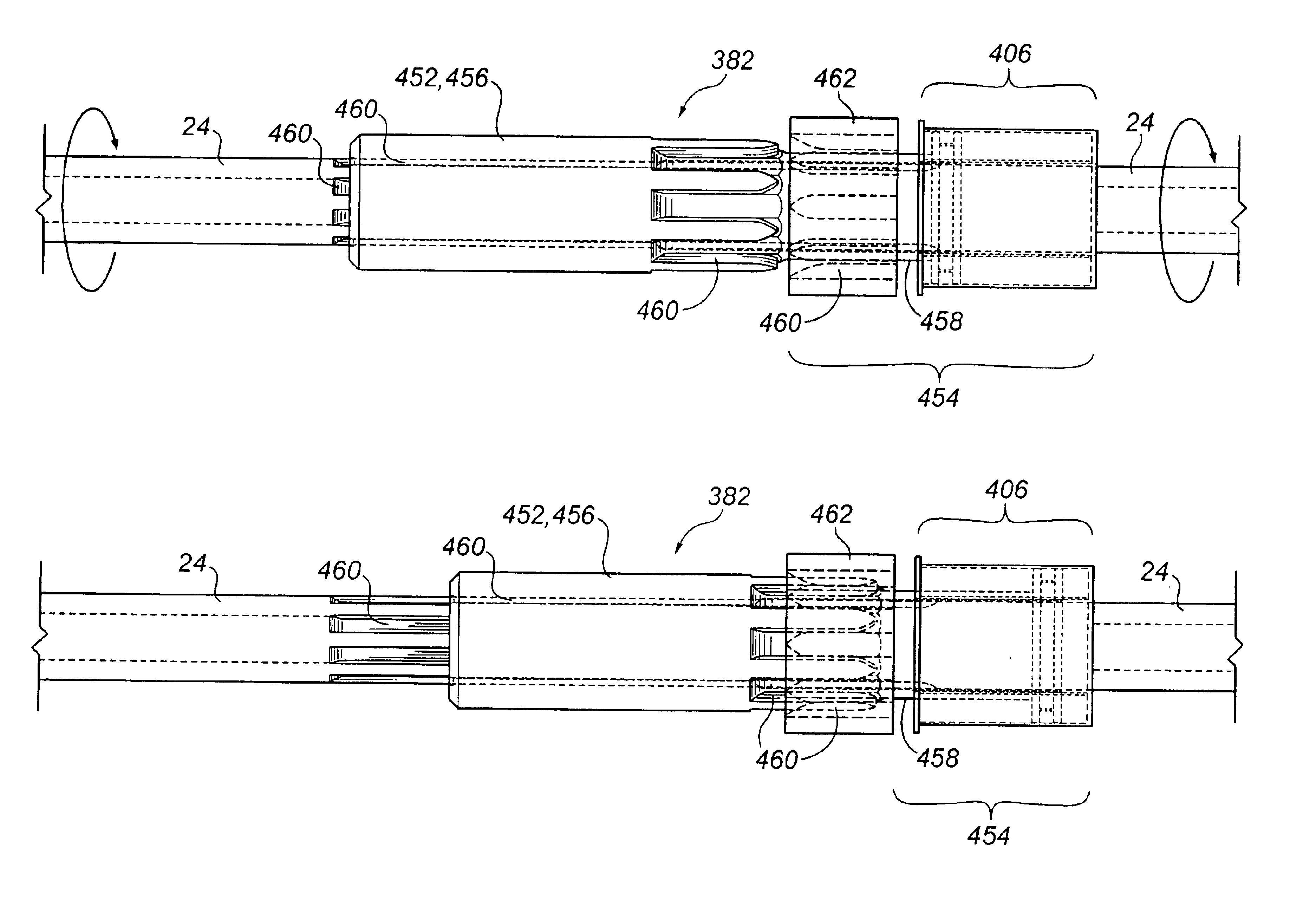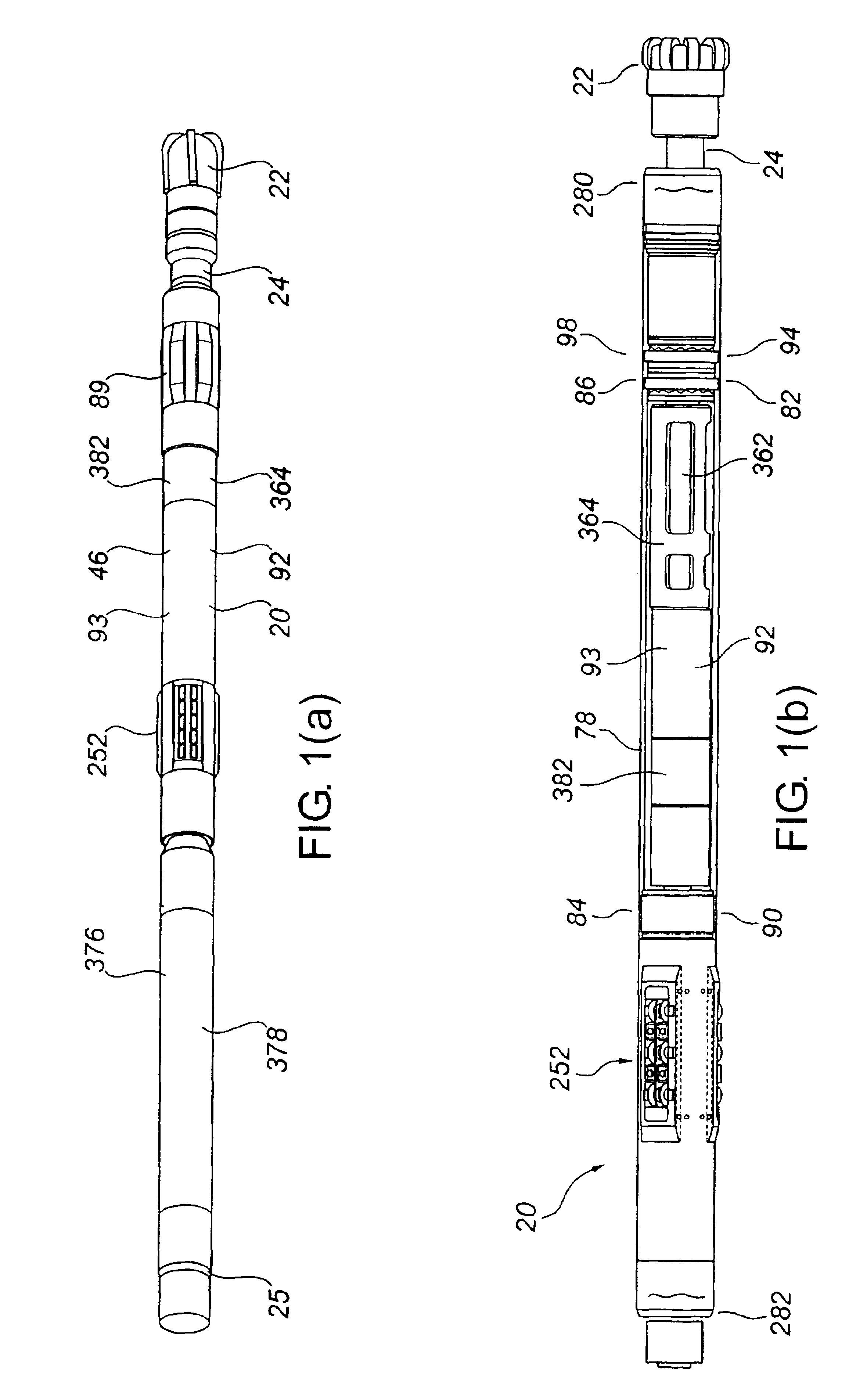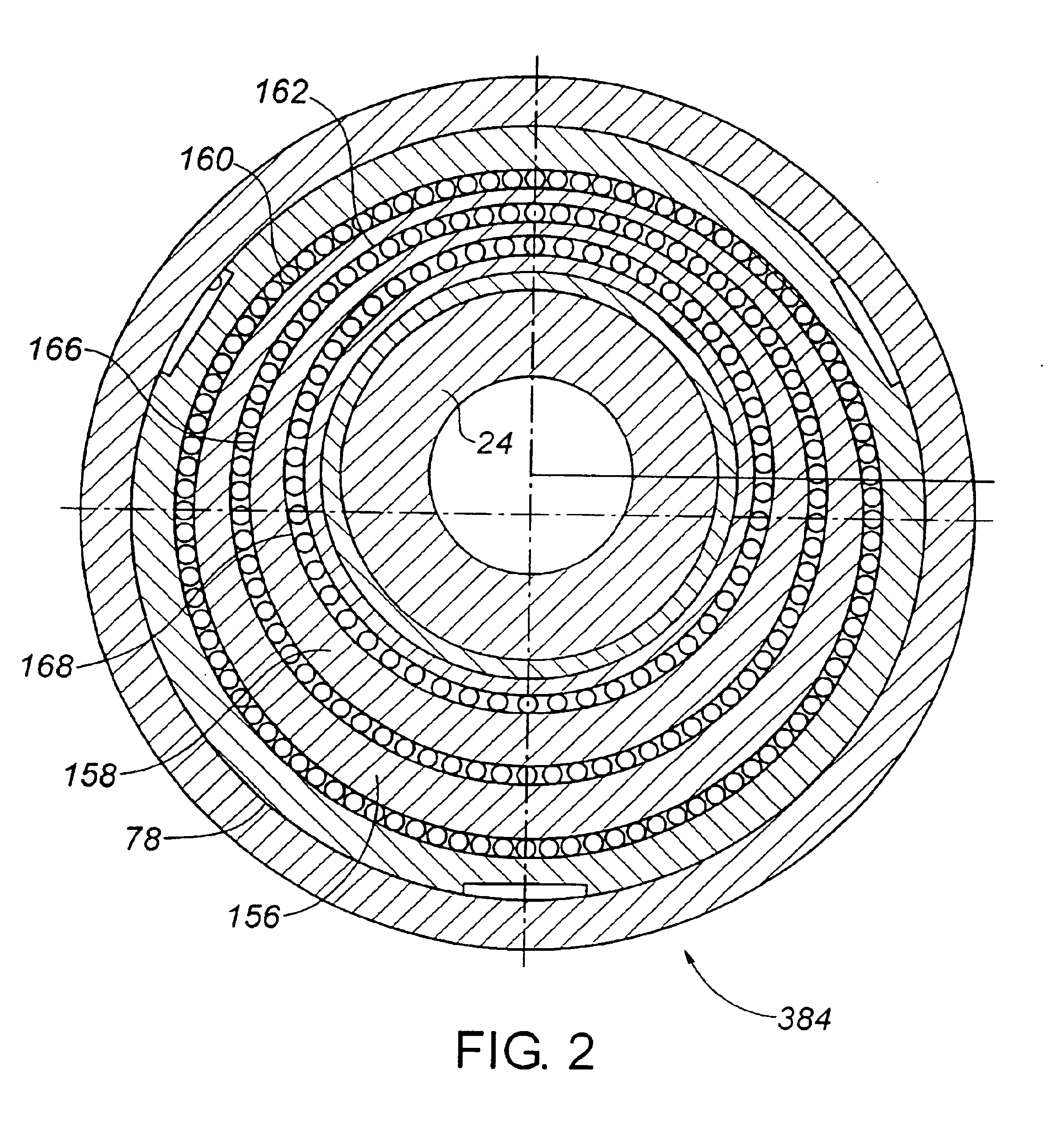Drill tool shaft-to-housing locking device
a technology of locking device and drill bit, which is applied in the direction of drilling pipe, directional drilling, borehole/well accessories, etc., can solve the problems of reduced drilling bit penetration rate, frequent problems, and wear of downhole motors
- Summary
- Abstract
- Description
- Claims
- Application Information
AI Technical Summary
Benefits of technology
Problems solved by technology
Method used
Image
Examples
first embodiment
[0231]The second preferred embodiment of deflection assembly (92) is essentially a variation of deflection assembly (92). The difference between the two embodiments relates primarily to the design of the deflection mechanism (384).
[0232]Specifically, the outer ring (156) of the first preferred embodiment is replaced with a rotary camming surface (408) and the inner ring (158) is replaced with a follower member (410). Rotation of the camming surface (408) relative to the follower member (410) will serve to deflect the drilling shaft (24). Coordinated rotation of both the camming surface (408) and the follower member (410) may serve to index the deflection mechanism (384) to provide a desired orientation for the bend in the drilling shaft (24).
[0233]Longitudinal movement of the deflection actuator (386) is therefore converted by the deflection linkage mechanism (388) and the deflection mechanism (384) into deflection of the drilling shaft (24). Similarly, longitudinal movement of the ...
third embodiment
[0235]deflection assembly (92) may be implemented in many designs which fall within the scope of the invention. Two such designs are depicted in FIGS. 7-13.
[0236]In the third embodiment, the deflection mechanism (384) is comprised of at least one follower member (410), and the deflection linkage mechanism (388) is comprised of at least one longitudinally movable camming surface (412). The deflection actuator (386) is comprised of a longitudinally movable deflection actuator member (414).
[0237]The follower member (410) is capable of lateral movement between the housing (46) and the drilling shaft (24) but is not capable of longitudinal movement. The follower member (410) directly or indirectly engages the drilling shaft (24) so that lateral movement of the follower member (410) results in lateral movement of the drilling shaft (24).
[0238]The actuation of the deflection assembly (92) is powered by the power source (406). An exemplary power source is depicted in FIG. 7(c) and schematic...
PUM
 Login to View More
Login to View More Abstract
Description
Claims
Application Information
 Login to View More
Login to View More - R&D
- Intellectual Property
- Life Sciences
- Materials
- Tech Scout
- Unparalleled Data Quality
- Higher Quality Content
- 60% Fewer Hallucinations
Browse by: Latest US Patents, China's latest patents, Technical Efficacy Thesaurus, Application Domain, Technology Topic, Popular Technical Reports.
© 2025 PatSnap. All rights reserved.Legal|Privacy policy|Modern Slavery Act Transparency Statement|Sitemap|About US| Contact US: help@patsnap.com



